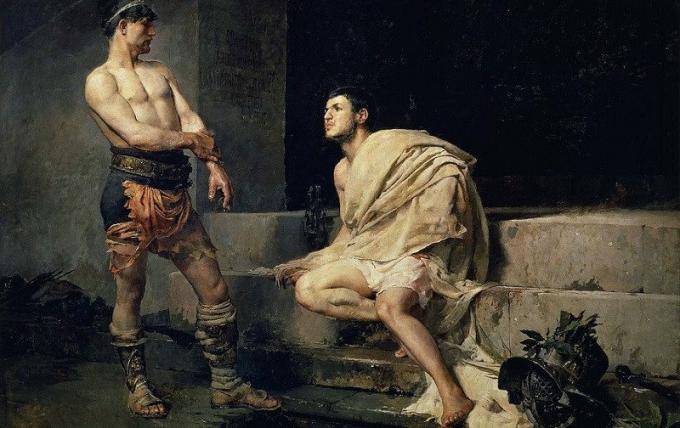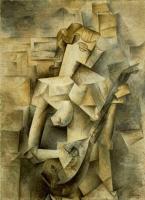The Auctorati: volunteer gladiators in Ancient Rome
Roman gladiators have become especially famous thanks to the seventh art. Indeed, today, due to the many films that tell us about them, there is no one who does not know who these fighters of ancient Rome were. But is everything that is said about them true?
Like all historical eras, the Roman era also has its own legends and clichés. For example, the idea that gladiators were slaves and prisoners of war. Because, although many of them had this condition, the truth is that scholars agree that the vast majority were free men who decided to dedicate themselves to this “profession.”
In today's article we will talk to you about the volunteer gladiators of Ancient Rome, or auctorati, and why this dedication was so attractive.
Why did Volunteer Gladiators exist in Ancient Rome?
We can think that these volunteer gladiators offered themselves for the simple pleasure of savoring the success, closely linked to an eminently martial society that showered glory on those who fought with courage and daring. In part, this is true, since volunteer gladiators enjoyed a much greater fame than slaves or prisoners.
However, there were other more “prosaic” reasons that we detail below. But first, let's start by explaining what the gladiator show consisted of.
- Related article: "The 3 stages of Ancient Rome: its history and characteristics"
From funeral spectacle to mass entertainment
There are archaeological testimonies that show that the ancient Etruscans practiced single combat to commemorate the deceased., especially in funerary areas. It was a ritual that offered the valor and courage of the combatants to the fallen warrior and, therefore, honored his name.
A little later, the Romans, direct heirs of Etruscan culture, took these activities and adapted them to their own funerary rituals. The first record of a gladiatorial combat in Rome dates back to the year 264 BC. C., in which three pairs of wrestlers faced each other in the Boario Forum, then a cattle market. The event had been financed by the brothers Marcus and Decimus Brutus for their father's funeral.
With the arrival of the Roman Republic, this type of combat began to be quite common, no longer linked to the funerary field, but rather to mass entertainment. It is the time of amphitheaters and great shows, which brought together hundreds of people whose sole purpose was to forget their daily lives for a few hours and escape with distraction.
Although the gladiator show was for all social strata, public demonstrations were usually limited to the lower classes. Wealthy families preferred to pay for private fights with which to entertain guests and, in the process, earn some favor.
- You may be interested: "What were the sports in ancient Rome?"
Fixed salary, abundant meat and commissions for victories
These types of shows, both private and public, were very expensive for those who commissioned them, since the price included the financial investment that the lanista (i.e. the gladiator's trainer) had performed. This investment included careful physical training and an extraordinarily high-calorie and abundant diet, which represented one of the main attractions of the profession.

Indeed, become part of the house of lanista and becoming a professional gladiator meant notable advantages over other means of subsistence.. To begin with, and as we have mentioned before, the diet of a gladiator was based especially on the consumption of meat, which for other strata of the population was prohibitive. On the other hand, the volunteer gladiator signed a five-year contract (with the possibility of renewal) during which he received a fixed salary, in addition to commissions for victories. The result was a fairly comfortable economic situation and, in addition, the possibility of accessing a permanent job.
This is perhaps one of the most widespread myths about the gladiators of ancient Rome: the idea of fierce combats in which almost no one was saved. Could not be farther from the truth. In reality, historians estimate that less than 10% of combatants died in the arena, and that the vast majority of Clashes were first blood, that is, they ended when one of the opponents inflicted the first blow. wound. We have to think that each of the volunteer gladiators was an important investment of money for the lanista, so the last thing he was interested in was losing a man in every fight.
The combats were carefully regulated. As in modern football matches, a referee (the Suma rudis), who was always a retired gladiator, carefully observed the movements of the fighters with the aim of not allowing any infringement to be carried out. He Suma rudis He could even stop the fight if he detected any irregularity.
From all this it follows that becoming a professional gladiator entailed less risk of death than being, for example, a legionnaire. To the few combats to the death that were carried out, it must be added that generally, good gladiators “only” faced each other two or three times a year, during the required celebrations. The rest of the time they spent training, eating and even founding their own family, as they were allowed to marry and have children. Seen this way, not so bad.
To the three previous reasons (good nutrition, a fixed salary and the low possibility of death) we must add the appeal of becoming a star. Because gladiators were, in Roman society, something similar to our current footballers or actors.
Acclaimed by the people, they had their own “fan clubs,” and their admirers sent them gifts, especially after a victory. Gladiators were, furthermore, authentic erotic symbols, for both women and men, and it was not unusual for them to come and request sexual favors. In a word, what today we would call authentic media stars. We haven't changed that much, really.


